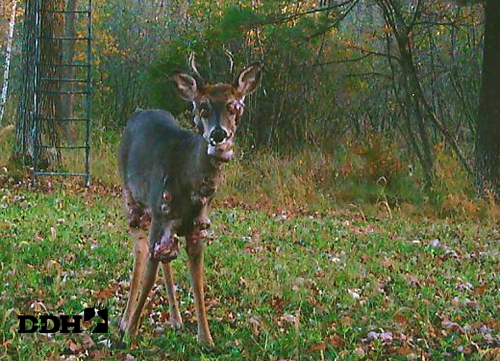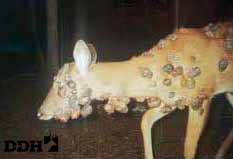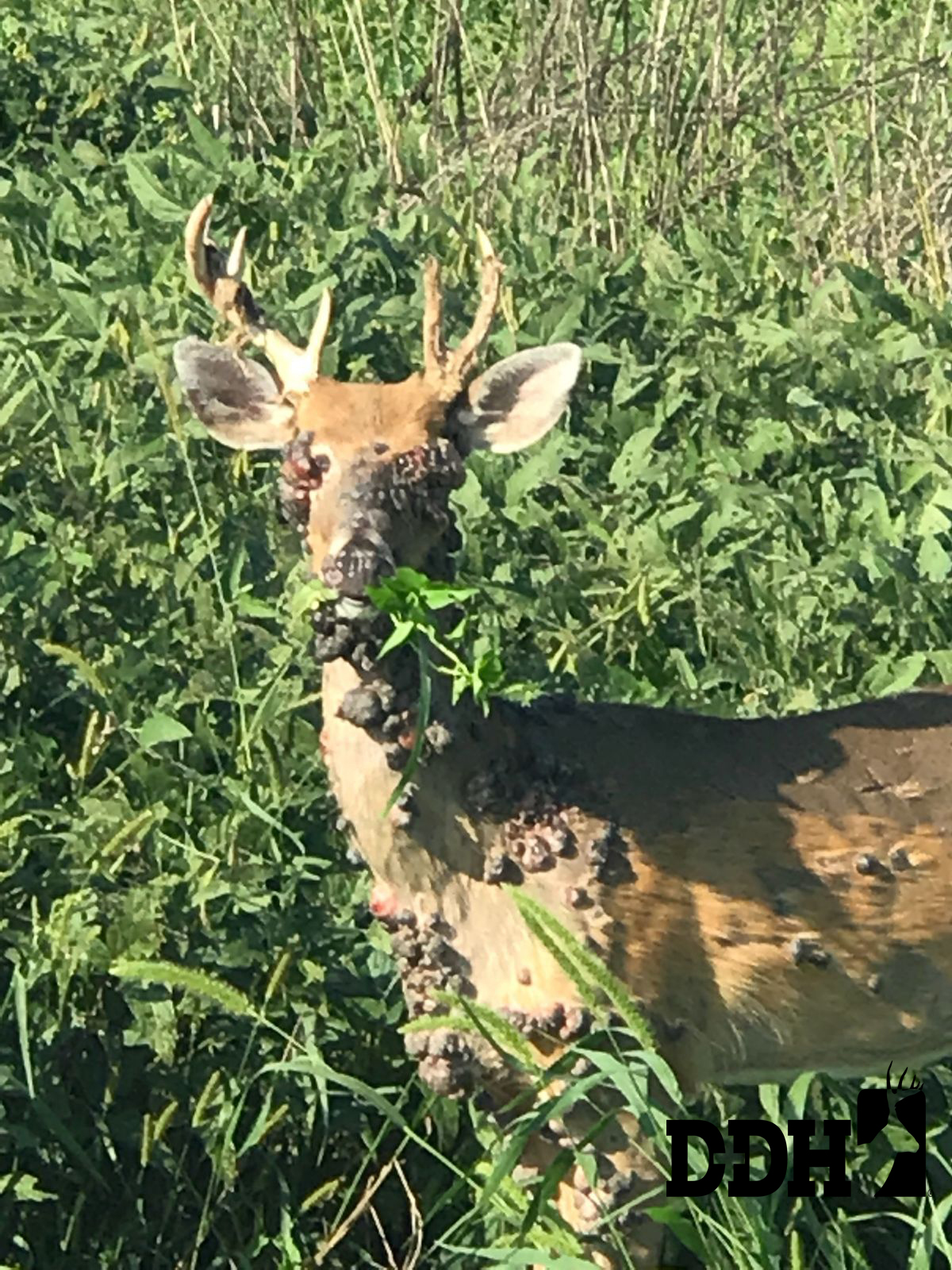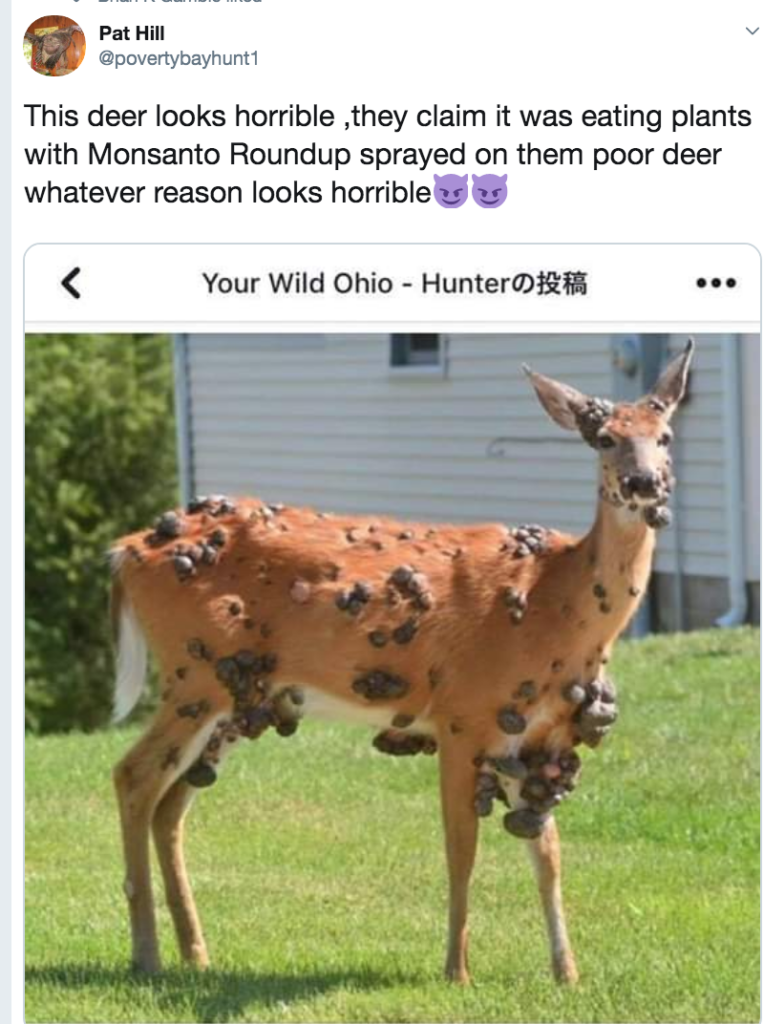
What causes “deer warts,” and do these unsightly whitetail tumors affect the health and well-being of our deer herds? Is it safe to eat a deer that has these warts? The short answer is no … and yes. No, these warts won’t typically affect the overall health of a deer. These hideous deer warts (which really aren’t warts, by the way) are most often just gross for us to look at, but for deer it’s just another day in Mother Nature’s world. And, yes, the venison is safe to eat. But, obviously, use your best judgement after processing the deer.
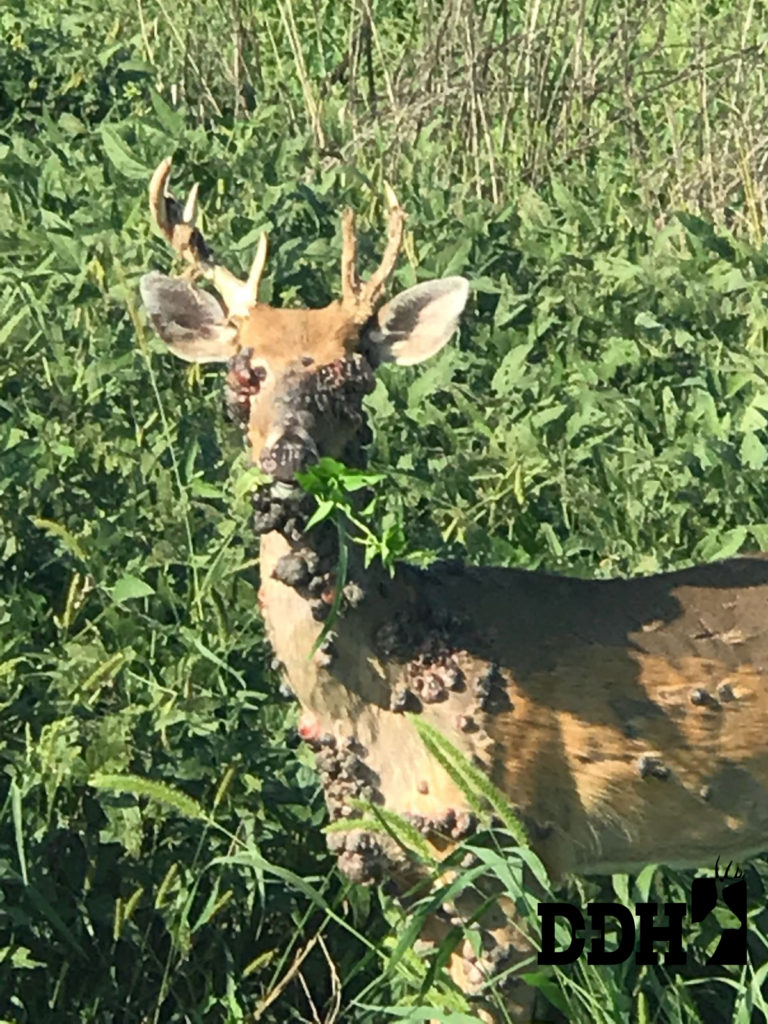
This latest photo comes to us from northern Illinois. This white-tailed doe is riddled with what are most likely papillomas, one of three benign tumors known to affect white-tailed deer (the others being fibromas and lipomas). Scientifically speaking, the growths are cutaneous fibromas and are caused by a papilloma virus. According to long-time Deer & Deer Hunting Field Editor Leonard Lee Rue III, “These are caused by viral infection, cannot be transmitted to man, and are seldom very injurious to the deer.” Although none of these deer ailments are common, papillomas are the most common of the three tumors and consist of wart-like growths that may number in the dozens. However, despite their unsightly appearance, the growths come off with the deer’s hide when the deer is skinned, and the meat is completely safe to eat. Cattle also contract papillomas, but of a different variety. According to the Washington State Department of Fish & Wildlife, papillomas are firm, hairless, gray or black in color, can be smooth or rough in texture, as small as peas or as large as footballs, and may grow in clusters. They may be found anywhere on the animal’s body. These growths are caused by viruses that are contagious within the same species. Papilloma viruses that infect one species usually do not infect another species. Typically, papillomas will eventually outgrow their blood supply and fall off.
